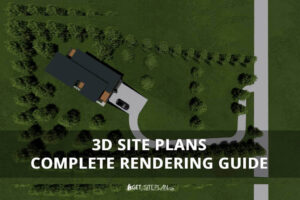
3D Site Plans – Complete Rendering Guide
Before a single foundation is poured or a wall takes shape, every construction project begins with one thing – a plan. But while traditional blueprints show dimensions, 3D site plans
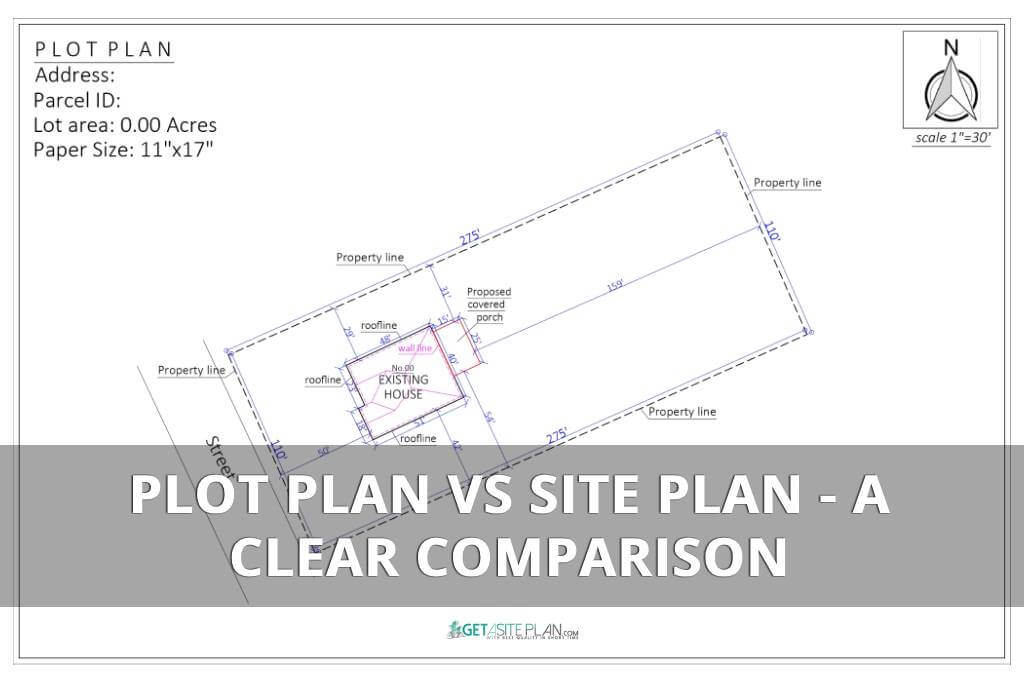

Contributing Writer | Architecture & Design Writer
Understanding the differences between plot and site plans is crucial for any development project.
A plot plan outlines property lines and focuses on parcel-specific details, while site plans compare larger areas and define structural layouts for multi-parcel developments.
Whether working on a small addition, a landscape-enhanced design, or a large-scale development project, selecting the appropriate plan ensures your project remains compliant with zoning and building codes and achieves its intended goals.
This article explores the key differences, cost implications, and unique applications of these plans to help you make the right choice for your project.
Table of Contents
ToggleUnderstanding the differences in scope, purpose, and detail between plot and site plans ensures you choose the right plan to meet your project’s requirements and regulatory standards.
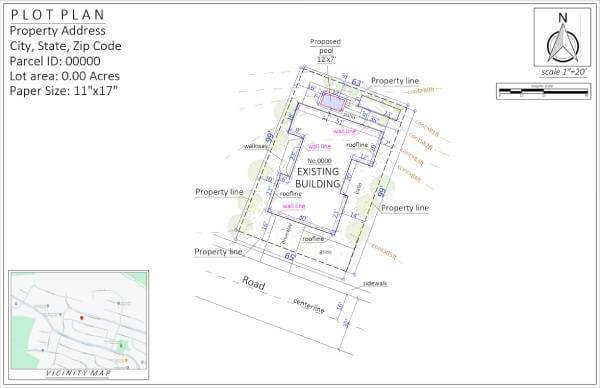
Though serving distinct purposes and containing varying levels of detail, plot plans, and site plans are often confused.
Here’s a table explaining each difference briefly:
| Aspects | Plot Plan | Site Plan |
| Scope | Focuses on a single parcel of land | Covers larger areas with multiple parcels |
| Details Included | Property boundaries, setbacks, easements, and dimensions | Infrastructure, utilities, drainage, and green spaces |
| Purpose | Ensures zoning compliance for small-scale projects | Guides large-scale development with integrated designs |
| Use Case | Home additions, driveways, fencing, etc. | Subdivisions, commercial complexes, industrial parks |
| Cost | Affordable due to limited scope | Higher due to comprehensive details and a larger scope |
To make a clear distinction, let’s break down the key differences in terms of scope, purpose, and compliance more thoroughly.
A plot plan outlines property boundaries, showcasing essential details such as parcel-specific setbacks, easements, and the exact scale and location of structures on a single piece of land (one of the reasons a plot plan is often confused with a land survey).
It is a streamlined document that offers a focused view of one specific plot, making it invaluable for projects like home extensions, pool installations, or fencing.
For example, in the City of Raleigh’s Site Plan/Plot Plan Revision Document’, it’s noted that sometimes a plot plan is referred to as a “minor site plan,” emphasizing the subtle differences between the two plans [1].
This distinction makes sense because site plans—both commercial and residential—cover larger areas, providing a comprehensive overview of multi-parcel layouts. They include mapped layouts of roads, utilities, drainage systems, and green spaces.
Site plans also highlight how the landscape interacts with elements like pathways and community spaces, ensuring harmony in design and functionality.
This difference in scope and detail directly impacts the cost, but more on cost later.
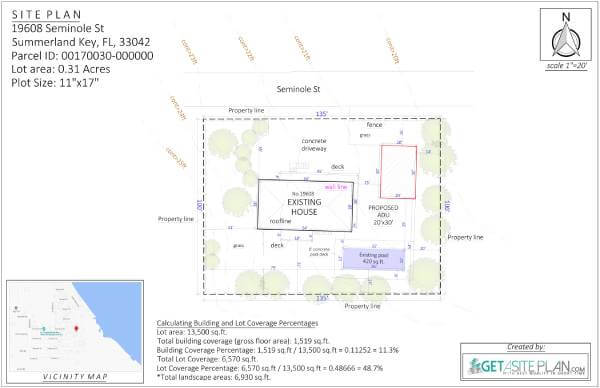
A plot plan shows land parcel boundaries and ensures projects meet zoning standards.
These plans are used when submitting building permits for small-scale changes to existing structures or developing a single lot.
When to use a plot plan:
For example, submitting a building permit for a home addition would typically require a plot plan.
Plot plans meet zoning standards and provide the necessary details to comply with local building codes.
On the other hand, site plans evaluate environmental considerations, making them indispensable for larger developments, such as subdivisions, commercial complexes, or industrial parks.
The situations when to use a site plan:
For example, designing a multi-use development with roads, utilities, and green spaces demands a site plan.
Overall, when in doubt, consulting local regulations or hiring professional services can ensure accuracy and compliance.
Compliance is critical for both plans, but their scopes differ.
A plot plan develops site-specific footprints, showing boundaries, easements, and dimensions that adhere to local zoning requirements. These plans ensure that projects like utility installation or pathway construction remain within legal parameters.
Site plans assess land use for broader compliance. They incorporate essential infrastructure, such as roads, pathways, and utility networks, while adhering to environmental codes.
A customized design ensures harmony between structures and landscapes while meeting local building and zoning regulations.
Understanding these requirements is essential, especially when determining whether to create these plans yourself or use other methods to obtain a site plan or plot plan.

The process of creating a plot plan is relatively straightforward compared to a site plan.
A plot plan outlines land divisions and provides scaled diagrams for a single parcel, often requiring basic measurements and zoning checks.
However, site plans require detailed integration, addressing elements like drainage systems, access routes, and green spaces.
Learning how to draw a site plan is feasible if you have the right guide and tools. Moreover, because of its simplicity, it’s even easier to learn how to draw a plot plan, which typically involves basic parcel-specific details.
Yet, both processes can be time-consuming and challenging without professional expertise, even when using suitable software for drawing site plans.
A simpler, faster option is to hire a drawing service like GetASitePlan, which specializes in creating accurate, compliant plans for permits.
GetASitePlan can deliver professional plot or site plans in as little as 24 hours, with prices starting at just $89 for a basic site plan. In some cases, the cost of a plot plan may be even lower, depending on the project.
Plot plan and site plan costs differ due to their scope and level of detail, as mentioned earlier.
Plot plans adhere to zoning requirements, making them affordable for single-parcel projects.
In contrast, by integrating critical elements like utility connections, road networks, and drainage systems, site plans define broader layouts and demand more resources.
By addressing complex compliance requirements, site plans facilitate large-scale developments, which explains their higher costs.
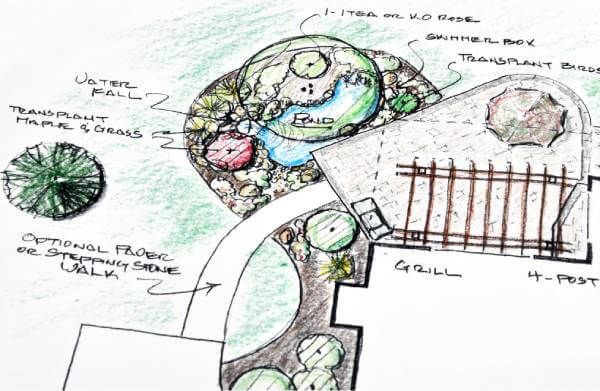
No, plot plans and landscape plans aren’t the same, and they serve different purposes.
A plot plan considers setbacks and dimensions, focusing on specific parcels and regulatory compliance. It outlines boundaries to ensure zoning adherence for projects like fencing or constructing a detached garage.
On the other hand, a landscape plan emphasizes aesthetic appeal and usability.
Landscape design plans show the entire property layout, integrating pathways, gardens, and seating areas to create functional spaces.
For larger projects, combining the technical accuracy of a plot plan with the design principles of a landscape plan creates a cohesive and compliant outcome.
Choosing between a plot plan and a site plan is more than just meeting compliance—it’s about aligning your project with your broader vision.
When selecting the right plan, consider not only the project size but also the long-term impact on functionality, aesthetics, and value. A well-chosen plan sets the foundation for success, transforming your concept into a compliant, functional reality.
Whether you’re drawing the plans yourself, consulting a professional, or using a specialized service, the key is to start with a clear understanding of your goals and regulatory requirements.
References:
Learn more about our contributor:

Contributing Writer | Architecture & Design Writer
During my career, I’ve written articles on interior design, home remodeling, and renovation with an emphasis on money-saving tips and DIY ideas. It’s been a rewarding journey and I am thrilled to continue helping others bring their architectural visions to life.

Before a single foundation is poured or a wall takes shape, every construction project begins with one thing – a plan. But while traditional blueprints show dimensions, 3D site plans

Many homeowners start landscaping projects without realizing some require permits. A landscape permit helps ensure compliance with local codes, protects the environment, and prevents drainage or structural problems. Whether you
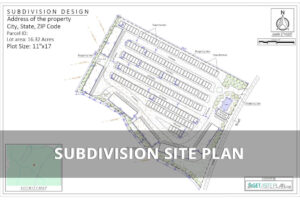
Picture standing over a blueprint that shows the future of your land – where roads will curve, how each lot will breathe, where every pipe, fence, and tree will fit.